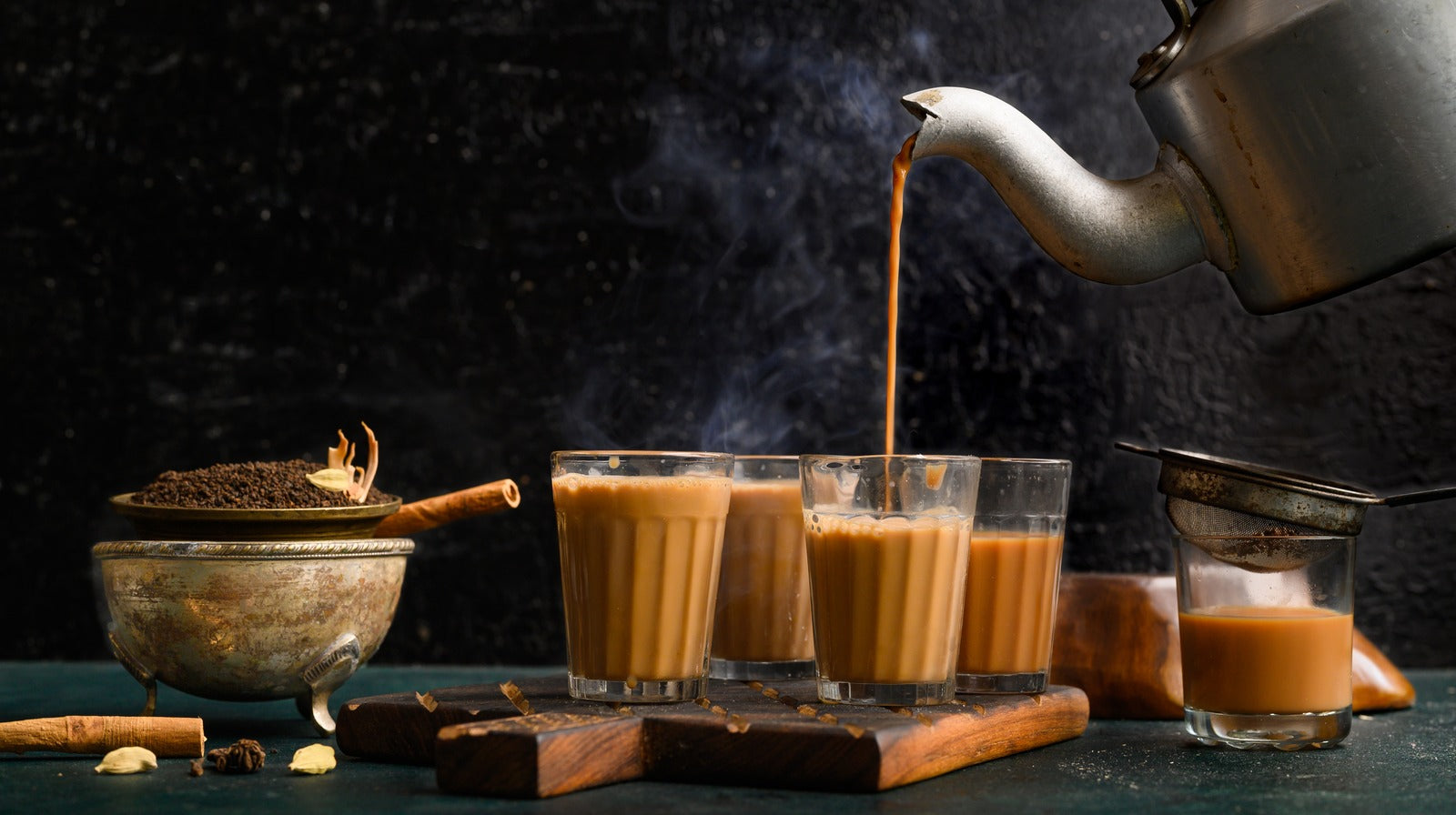In the bustling streets of South Asia, the aroma of freshly brewed chai mingles with the vibrant colors of the markets, creating an inviting atmosphere. For generations, chai has been more than just a beverage; it has served as a powerful catalyst for bonding and fostering connections between people. Let’s explore the rich history of chai as a bonding experience, tracing its roots in traditional ways and how it continues to unite hearts and cultures in the modern world.
Chai: A Cultural Institution of South Asia
The story of chai as a bonding experience can be traced back centuries, as it has been an integral part of South Asian culture. The preparation of chai is an art that involves boiling black tea leaves with water, milk, and a blend of aromatic spices, including cardamom, cinnamon, ginger, cloves, and black pepper. The result is a heavenly blend that warms the taste buds and the soul.
Traditional Ways Chai Fosters Bonding
Hospitality and Welcoming Guests:
In South Asia, chai is a symbol of hospitality. When guests visit homes or businesses, they are often greeted with a steaming cup of chai. This warm gesture goes beyond the act of offering a beverage; it signifies respect, warmth, and a desire to create a sense of belonging for the guests. Sharing chai with others creates an atmosphere of comfort and ease, facilitating open conversations and strengthening bonds.
Chai in Public Spaces:
In the bygone era, chai vendors in crowded markets and street corners were more than just purveyors of tea; they were social hubs. People from diverse backgrounds would congregate around these chai stalls, fostering a sense of community. Strangers would become friends, and lively discussions on various topics would unfold over cups of chai. These spaces became melting pots of culture, connecting people from all walks of life.
Chai and Family Gatherings:
In traditional South Asian families, chai time is an important part of the daily routine. The entire household would gather around, sharing stories, experiences, and laughs. Chai time transcended generations, with elders passing down wisdom to the younger ones while everyone savored the comforting flavors of the beverage. These moments of togetherness strengthened familial ties and created cherished memories.
The Aromatic Blend and its Bonding Properties
The aroma of chai is nothing short of magical. As the spices infuse the air, they carry with them a sense of nostalgia and warmth. This fragrance invites people to gather around and immerse themselves in the sensory experience. It sets the stage for bonding, creating an environment where conversations flow effortlessly and hearts connect.
Modern Chai Culture: Bonding in a Changing World
As the world evolves, the tradition of chai as a bonding experience continues to thrive, adapting to modern lifestyles and preferences.
Chai Cafes and Social Spaces:
In the contemporary era, chai cafes have sprung up in urban centers, offering a modern twist to the traditional experience. These cafes provide cozy, inviting spaces where people can come together, unwind, and connect over cups of chai. The ambiance is designed to foster a sense of community, making them perfect spots for forming new friendships and networking.
Virtual Chai Gatherings:
In the age of technology, physical distances have become less of a barrier to forming connections. Virtual chai gatherings have gained popularity, enabling people from different parts of the world to bond over a shared love for chai. Video calls and online meetings have become chai time rendezvous, bridging gaps and bringing individuals closer together.
Chai as a Cultural Exchange:
Beyond the borders of South Asia, chai has transcended cultural boundaries, becoming a global phenomenon. People from diverse backgrounds embrace chai as a part of their own cultures, recognizing its power to unite hearts and foster connections. The act of offering chai to guests and loved ones has become a symbol of warmth and welcome in various cultures worldwide.
The Magic of Spices: Catalysts for Bonding
The spices used in chai play a crucial role in enhancing the bonding experience. Each spice contributes its unique flavor and aroma, creating a harmonious blend that leaves a lasting impression on those who partake in the experience.
Cardamom: The Spice of Unity
Cardamom, with its sweet and floral notes, is considered the spice of unity in chai. It binds the other spices together, just as it brings people together in shared moments of joy and connection.
Cinnamon: The Spice of Warmth
Cinnamon adds a comforting warmth to chai, making it ideal for fostering intimacy and strengthening bonds. Its presence symbolizes the desire to create a cozy environment for conversations to flow.
Ginger: The Spice of Harmony
Ginger's spiciness and zing infuse chai with a harmonious balance of flavors. Similarly, it encourages people to find common ground and appreciate the diversity of perspectives.
Cloves: The Spice of Togetherness
Cloves lend chai a delightful pungency and aroma, reminding us of the power of togetherness. Like the cloves that work in harmony, people can come together to create something beautiful and meaningful.
From its humble beginnings in South Asia to its global reach today, chai has transcended borders and cultures as a powerful bonding experience. The intoxicating aroma of chai, coupled with the magic of spices, creates an atmosphere of warmth, acceptance, and connection. Whether shared among family, friends, or strangers, chai has the ability to bring hearts together and unite souls.




Leave a comment
This site is protected by hCaptcha and the hCaptcha Privacy Policy and Terms of Service apply.